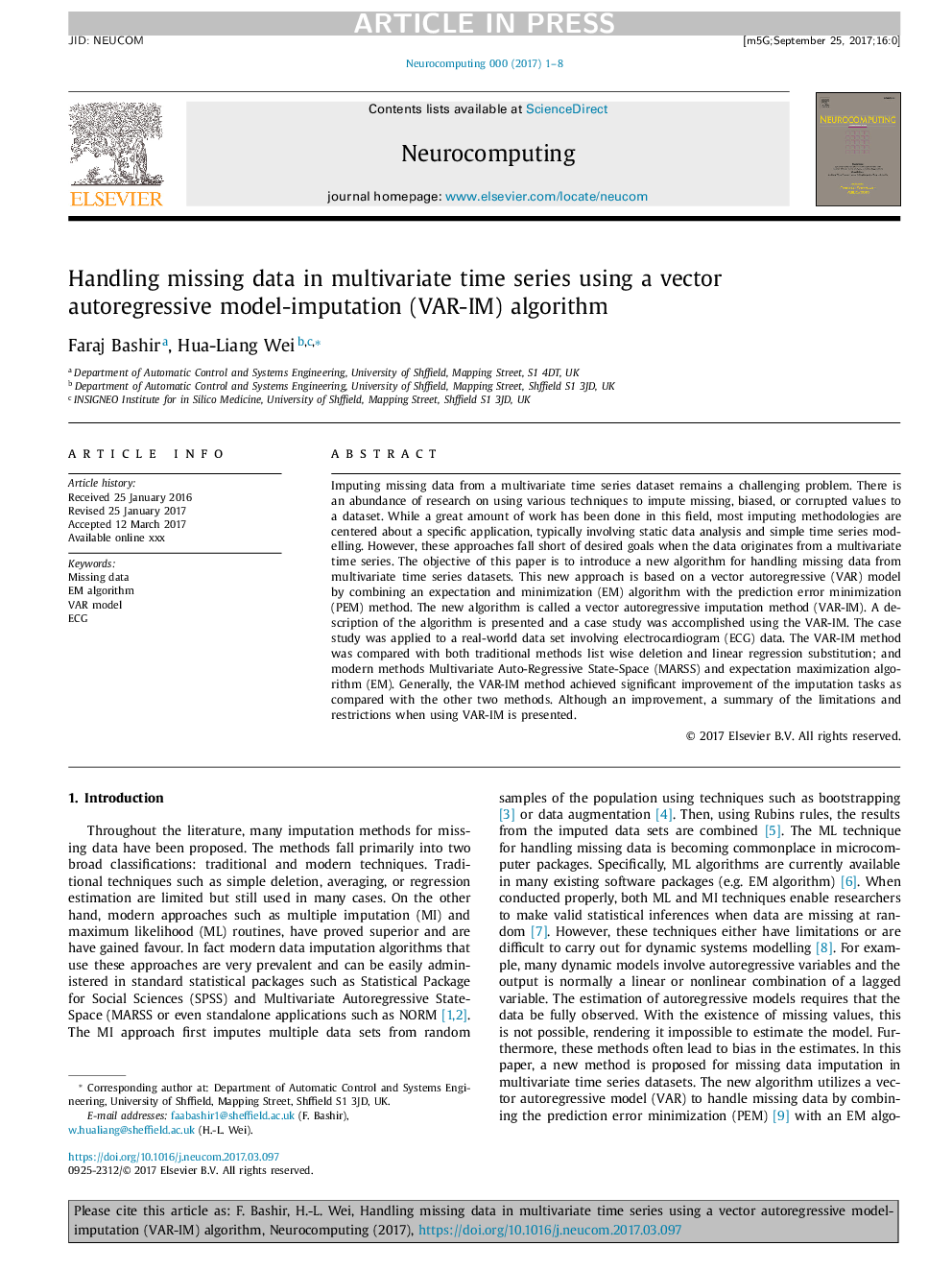| Article ID | Journal | Published Year | Pages | File Type |
|---|---|---|---|---|
| 6864765 | Neurocomputing | 2018 | 8 Pages |
Abstract
Imputing missing data from a multivariate time series dataset remains a challenging problem. There is an abundance of research on using various techniques to impute missing, biased, or corrupted values to a dataset. While a great amount of work has been done in this field, most imputing methodologies are centered about a specific application, typically involving static data analysis and simple time series modelling. However, these approaches fall short of desired goals when the data originates from a multivariate time series. The objective of this paper is to introduce a new algorithm for handling missing data from multivariate time series datasets. This new approach is based on a vector autoregressive (VAR) model by combining an expectation and minimization (EM) algorithm with the prediction error minimization (PEM) method. The new algorithm is called a vector autoregressive imputation method (VAR-IM). A description of the algorithm is presented and a case study was accomplished using the VAR-IM. The case study was applied to a real-world data set involving electrocardiogram (ECG) data. The VAR-IM method was compared with both traditional methods list wise deletion and linear regression substitution; and modern methods Multivariate Auto-Regressive State-Space (MARSS) and expectation maximization algorithm (EM). Generally, the VAR-IM method achieved significant improvement of the imputation tasks as compared with the other two methods. Although an improvement, a summary of the limitations and restrictions when using VAR-IM is presented.
Keywords
Related Topics
Physical Sciences and Engineering
Computer Science
Artificial Intelligence
Authors
Faraj Bashir, Hua-Liang Wei,
